Your Bike Advocacy Playbook
By: Kiran Herbert, PeopleForBikes’ content manager and Martina Haggerty, PeopleForBikes’ senior director of local innovation
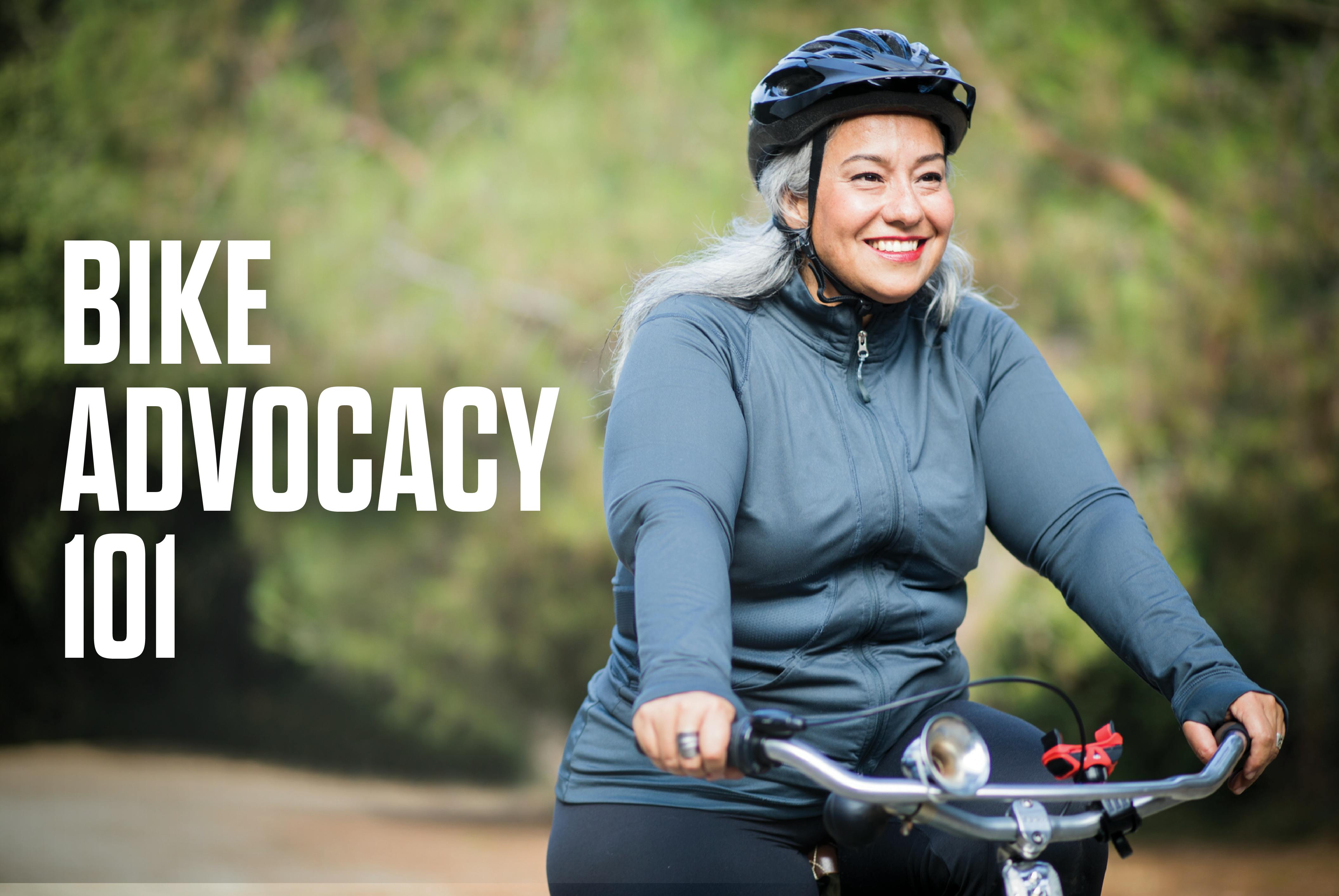
Want to help make your city a better place to bike? We developed a 15-point, research-based fact sheet to help you push for change.
If you’ve ever attended a town hall meeting to support a proposed bike lane or trail, or simply engaged in a lively discussion about one on Nextdoor, you know it can often be a pretty frustrating process. These days, when discussing anything that involves growth or change, there’s almost always a small, vocal contingent that relies on emotion to argue why something shouldn’t happen. You might know a new bike lane — or another proposed project, like a housing bill that indirectly affects bicycling — would be a good thing for your community, but without data or research to back up your argument, speaking up can feel like a lost cause.
That’s where our new guide comes in. At PeopleForBikes, we spend our days firmly entrenched in the research and data that supports building better communities for bicycling. We developed this 15-point fact sheet to help counteract misconceptions that often arise when advocating for change, as well as to promote strategies we know work. Bookmark it, print it out, and email it to everyone you know — let this article support you in shifting the larger conversation around the power of bicycling.
1. Bicycling is good for the planet
This might feel like a given, but if Utah Senator Mitt Romney’s recent remarks are any indication, we’re not all on the same page about the climate benefits of getting more people on bikes. According to the Environmental Protection Agency (EPA), transportation makes up 28% of the total U.S. greenhouse gas emissions, with 57% of those emissions coming from passenger vehicles. When we build more (and better) bike lanes, the environmental benefits are clear: higher bike ridership, less driving, and an overall reduction in emissions.
Researchers at Carnegie Mellon found that “if even 10% of short car trips during peak afternoon travel were replaced with micromobility, more than 4,800 car trips would not happen, decreasing vehicle miles traveled by more than 7,300 miles a day.” While this would translate to a 2.76% reduction in greenhouse gas emissions, it would only be possible with “wide-scale bike lane deployment.” This study confirms similar findings from McGill University that spotlight bike infrastructure in Montreal, as well as research from the Institute for Transportation and Development Policy, which found new bike lanes lowered emissions in Guangzhou, China, and Bogota, Colombia.
According to another European study, if 10% of the population were to replace one car trip a day with a bike ride, overall carbon emissions from transportation would also drop 10%. Research done by Portland State University showed that if 15% of car trips were instead taken by electric bicycle, we could see a 12% decrease in transportation-related emissions. Add in the fact that bikes are one of the lowest carbon-emitting modes of transportation, and it's safe to say that any way you look at it, bicycling benefits the environment.
2. If you build it, people will bike
Ask most people why they don’t bike and they’ll likely name safety as a key concern. A nationwide survey from the National Institute for Transportation and Communities found that a whopping two-thirds of U.S. residents would be more likely to bike if they were separated from cars by a physical barrier. There is so much research that shows people will bike if cities build good infrastructure. Overall, the average protected bike lane sees bike counts increase 75% in its first year alone.
Notably, bicycling in Sevilla, Spain, increased 435% when the city added 86 miles of dedicated bike lanes. Even smaller transformations to include protected bike infrastructure can have a huge impact. After buffered bike lanes were installed on Philadelphia's Spruce and Pine streets, bike traffic increased 95%, while intersections in Montreal with protected bike lanes saw 61% more bike traffic than comparable intersections with no bike infrastructure. There’s also evidence that protected bike lanes are better for bike share.
In Cambridge, Massachusetts, a 2022 upgrade brought a two-way protected bike lane to a section of Garden Street, where before there had only been sharrows and door-zone bike lanes. The changes transformed the entire neighborhood: Bike mode-share nearly quadrupled and increased by more than 2%. Even accounting for seasonal dips in ridership, bicycling in the area increased more than sixfold since the separated bike lanes were built.
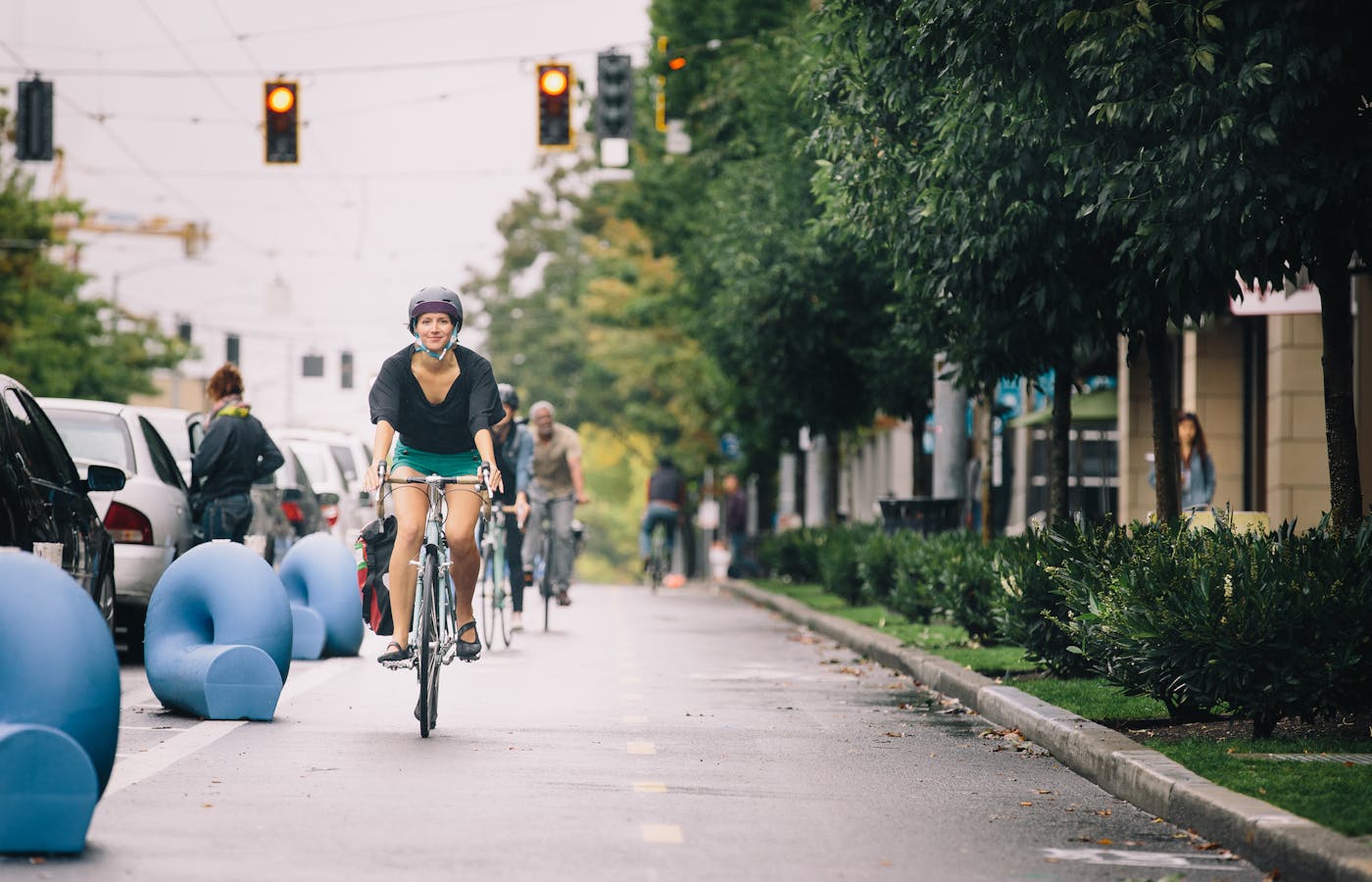
3. Yes, protected bike lanes are better than sharrows or standard bike lanes
As a rule of thumb, if something’s not going to be comfortable for people of all ages and abilities to ride, then don’t build it.
For decades, U.S. traffic engineers assumed that people on bikes could almost always share the road with cars. But a shoulder — even a striped bike lane — on a street with fast traffic isn’t an appealing place to bike for most people, especially women and less experienced riders. Putting a bike symbol in the middle of a busy thoroughfare does little to make it a place where parents feel comfortable riding with their children.
We now know, based on both U.S. and international experience, what kind of infrastructure designs give people of all ages and abilities the sense of safety, comfort, and enjoyment that makes them want to ride. This includes protected bike lanes, which are located next to the road and physically separated from traffic, as well as things like better lighting, traffic-calming barriers, and well-marked crosswalks. While sharrows might have a place in small towns or on low-stress streets, protected bike lanes should be the default for roadways with speeds above 25 mph or when vehicular volumes exceed 6,000 average daily traffic (ADT).
4. Bikes are good for public health
People living in bike-friendly communities tend to have better health outcomes due to increased physical activity, improved cardiovascular health, and reduced stress levels. A 2015 Columbia University study showed that New York City's $10 million investment in bike and pedestrian improvements resulted in an estimated societal health savings benefit of $230 million. Put another way, every $1,300 New York City invested in building bike lanes provided benefits equivalent to one additional year of life at full health over the lifetime of all city residents.
According to the British Medical Journal, regular bicycling is associated with a 41% decrease in the risk of death from any cause, a 45% decrease in the risk of cancer, and a 46% decrease in the risk of heart disease. And the benefits don’t stop there: a PLOS Medicine study showed that people who began bicycling regularly after age 50 saw a 20% decrease in the risk of Type II Diabetes.
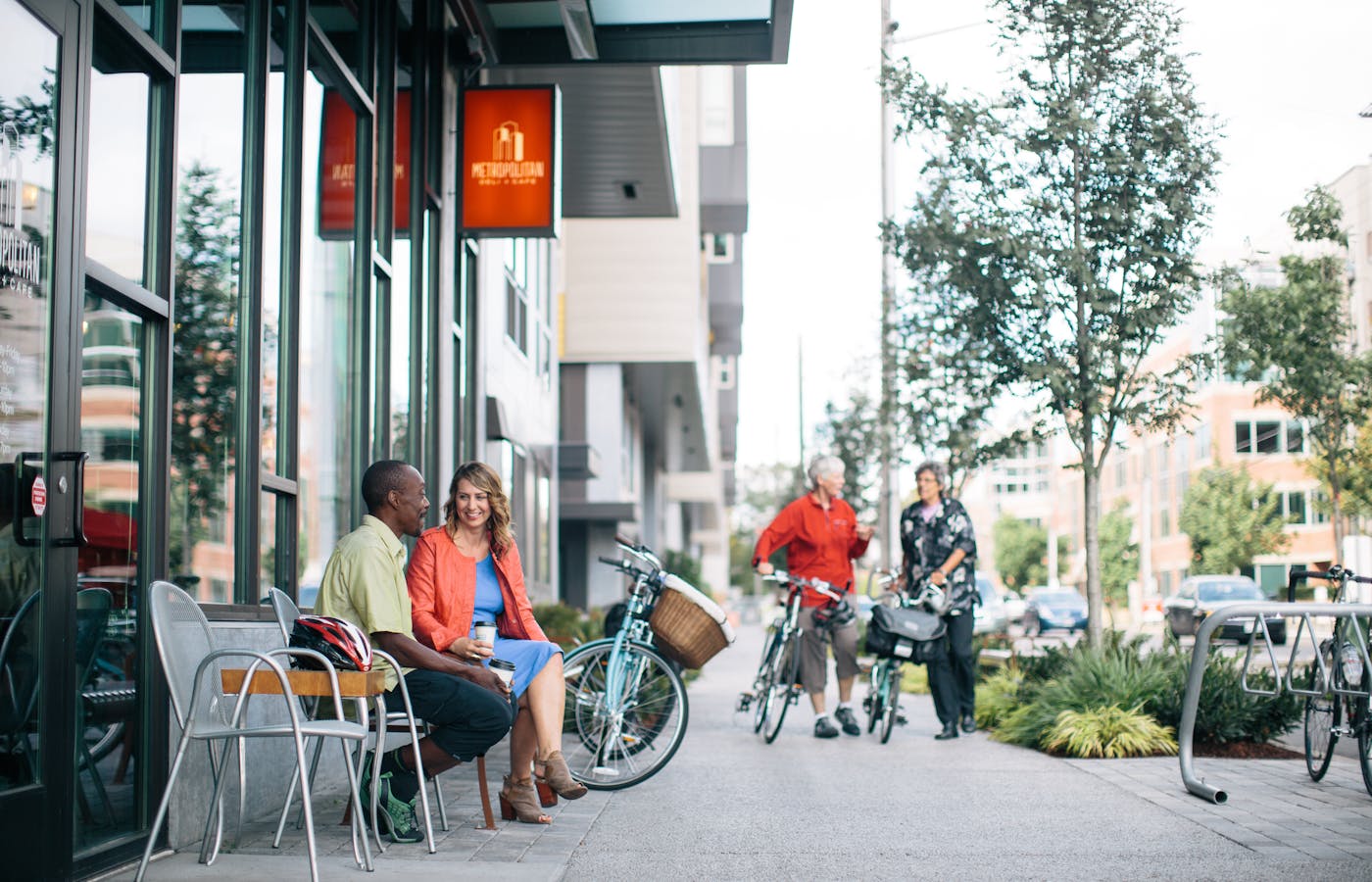
5. Bikes lanes and trails are good for business
In response to proposed or newly built bike lanes, it seems like store owners often complain about reduced parking and customers lost. All of the evidence, however, points to the fact that installing protected bike routes tends to boost local shops. For example, after a hugely contested bike lane was installed on Skillman Avenue in Queens, New York, data shows that sales in the stores, bars, and restaurants on the seven-block commercial stretch collectively rose by 12%.
Other streets in New York have seen similar results: After the construction of a protected bike lane on 9th Avenue in Manhattan, local businesses saw a 49% increase in retail sales (on other streets in the borough, the average was only 3%) and a redesign of the city’s Union Square to include a protected bike lane resulted in 49% fewer commercial vacancies, compared to 5% more throughout Manhattan. And it’s not just in New York: In Salt Lake City's Broadway, replacing parking with protected bike lanes increased retail sales.
There’s also evidence that customers who arrive at retail stores by bike spend the same amount per month compared to people who arrive by car — they tend to make smaller purchases but return more frequently. What’s more, neighborhoods that don’t require a car to move around are more economically resilient. Bike trails and greenways also benefit communities economically by attracting visitors, promoting job growth in tourism-related industries, and revitalizing communities through the "Trail Town" model and Trail-Oriented Development.
6. More bike infrastructure can benefit drivers, too
It’s important to remember that even if the infrastructure is perfect, not everyone will choose to bike. Die-hard drivers can still become bike advocates, however, especially when they realize that the more people ride bikes, the less car congestion there is.
This was a key messaging point in Austin, where the city completed 115 miles of new bike lanes in just two years. By shifting traffic from cars to bikes and making it easier to reach transit stops, Austin's planned 400-mile protected bike lane network is projected to increase the city's traffic capacity by about 25,000 trips per day at about the same cost ratio as a single expressway widening.
In 2014, a New York City Department of Transportation (NYDOT) study found that after a six-foot buffered bike lane was installed on Columbus Avenue, car volumes were unaffected and that those cars moved 35% faster. According to an NYDOT statement, the “study found that on corridors with protected bike lanes traffic flow was maintained or improved on average because of the enhanced organization of the roadway.”
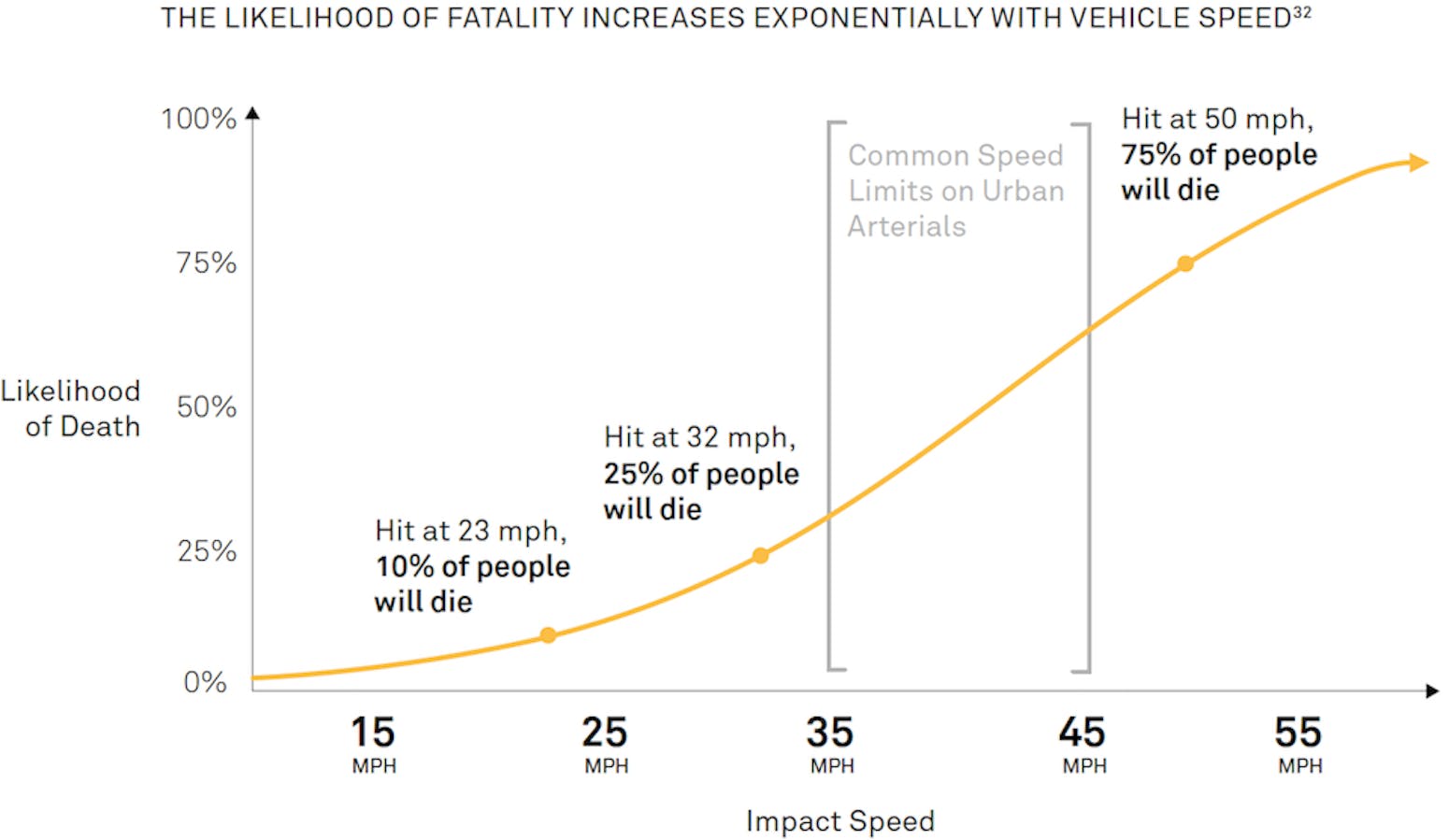
7. Protected bike lanes and reduced speeds save lives
Time and again, we see that when speed limits fall, safety rises. Because the likelihood of fatality increases exponentially with vehicle speed, even small reductions in speed limits can have an outsized effect. The Highway Safety Manual shows that deadly crashes can be decreased by 17% if speeds are reduced by just 1 mph, while a separate study from Sweden's Lund Institute of Technology found that a 10% reduction in average speed led to 34% fewer fatal crashes. (As an added bonus, there's evidence that lower speed limits improve air quality.)
A widely celebrated success story comes from Spain: When the speed limit on single-lane urban roads was lowered to 18.5 mph, road deaths fell by 14%. For cyclists, deaths were cut almost in half. This is good news as cities nationwide lower speed limits across the board, making streets safer for everyone.
The even better news? Protected bike lanes reduce speeding and make streets safer for people walking, biking, and driving. After protected bike lanes were installed in New York City, injuries for all road users on those streets were reduced by 40-50%. Similarly, protected bike lanes in Montreal led to a 28% decrease in injuries. This 2019 study of twelve cities also found that protected bike lanes decrease fatalities for all road users.
8. Bikes help reduce the cost of living and make cities more affordable
In 2021, U.S. households spent an average of $10,961 on transportation, making it the second largest household expense after housing. One in four U.S. adults suffers from transportation insecurity, a phenomenon that often has an inequitable impact on low-income families. Increasing access to low-cost modes of transportation like bikes — and safe places to ride them — effectively reduces this often-overlooked household expense and ensures communities remain affordable for everyone. The Housing and Transportation (H+T®) Affordability Index is a great tool to determine the neighborhood-level housing and transportation costs for your community.
9. Housing policy and bike policy are intertwined
The right kind of housing policy can make our communities more bike-friendly. When we create transit-oriented neighborhoods, remove parking requirements, allow for more infill housing in existing urban areas, and permit the building of accessory dwelling units and multi-family housing, we naturally start to create places where destinations are closer together and people feel more comfortable biking.
The U.S. is in the midst of a severe housing crisis, forcing residents to live increasingly far away from important destinations. Adopting climate-friendly land use policies promotes a mix of land uses in close proximity to one another. When people’s homes are closer to their basic needs — jobs, grocery stores, schools, pharmacies, etc. — they’re more likely to ride a bike for daily trips. For those who drive, trips are considerably shorter.
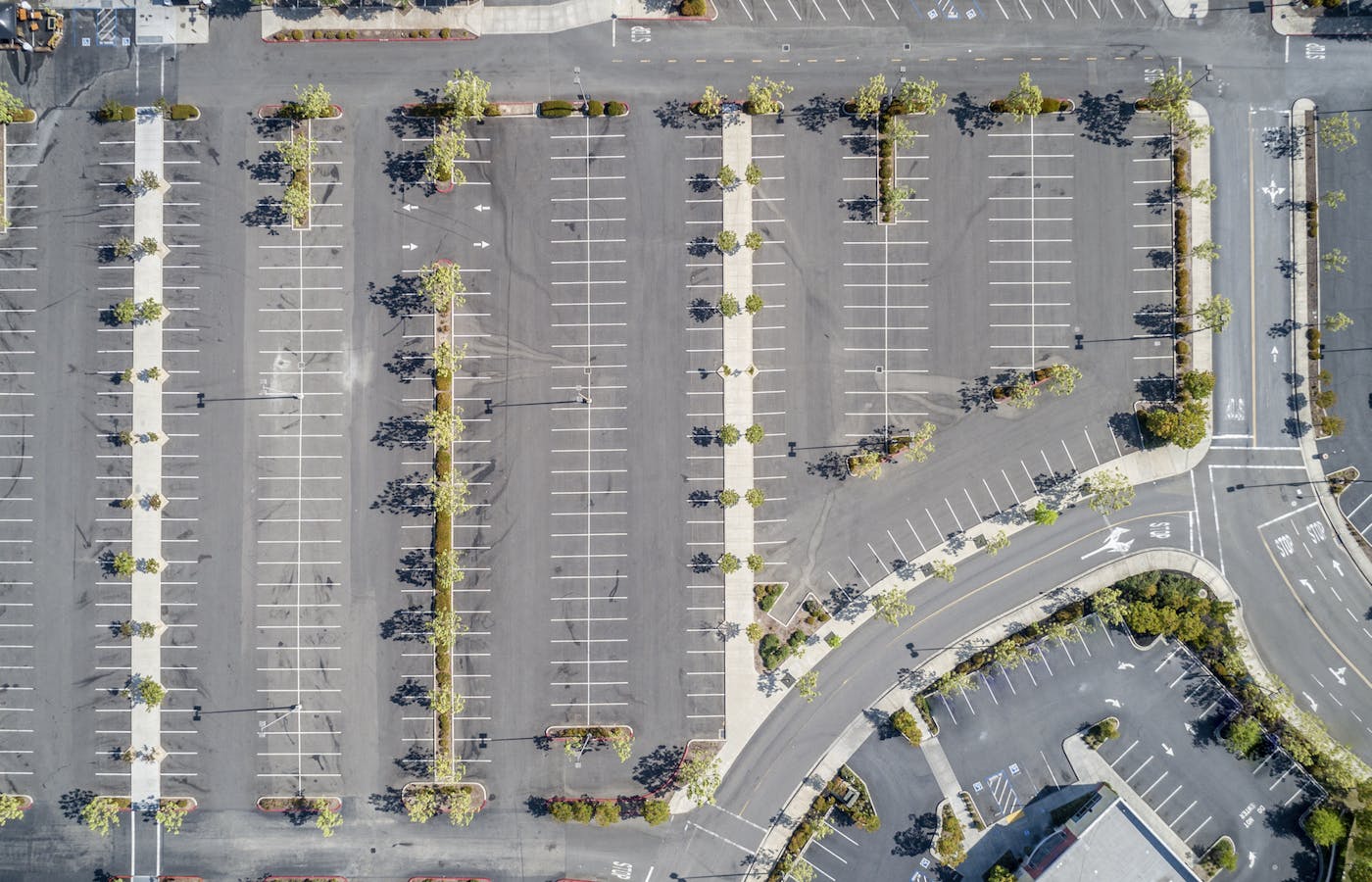
10. Parking reform is key to building bike-friendly cities
The U.S. has about 2 billion parking spots, which translates to about seven parking spaces for every car. And parking is expensive for new developers to build — it can cost between $40,000 and $60,000 per parking space — increasing housing costs for everyone and taking valuable space away from development.
What’s more, fewer homes have led to a slew of other intersecting issues: a nationwide housing shortage, an increase in home prices, and growing inequity. Lower-income families who drive less and use transit more inevitably end up paying for infrastructure they don’t need while drivers are subsidized for their car use.
When parking is required, buildings are forced to spread further and further apart, decreasing an area’s walkability and leading to urban sprawl, which swallows more and more land to sustain the same population. This in turn pushes people to drive more, upping greenhouse gas emissions, while the ensuing traffic makes it harder for everyone to get where they need to go.
Essentially, this plethora of free car storage is at the root of a number of societal woes. A much better investment is a network of protected bike lanes and trails. Less parking means more proximity — since most people only want to bike one or two miles, the more destinations you have in that radius, the better a place becomes for bicycling. That’s only possible, however, if you’re not required to build big parking lots. Thus, parking reform is key to building bike-friendly cities.
11. E-bike subsidies work
While the federal government currently offers a federal tax credit for electric cars of up to $7,500, nothing similar exists for people buying an electric bike. With a lack of federal initiative, more and more states, counties, and cities across the country are taking matters into their own hands, creating e-bike incentive programs that are as varied in substance as they are geographically. While many programs are relatively new, the data is compelling.
Launched in the spring of 2022, Denver’s incredibly popular e-bike incentive program has led to some notable results, including $1 million in cumulative annual savings for the city. Researchers also calculated that the program avoided considerable amounts of greenhouse gas emissions, with some 71% of survey respondents claiming to use their gas-powered vehicles less often (those surveyed rode their e-bikes an average of 26 miles per week, replacing 3.4 round trip vehicle trips). Importantly, 29% of Denver e-bike redeemers who completed the program survey indicated they were also new to riding.
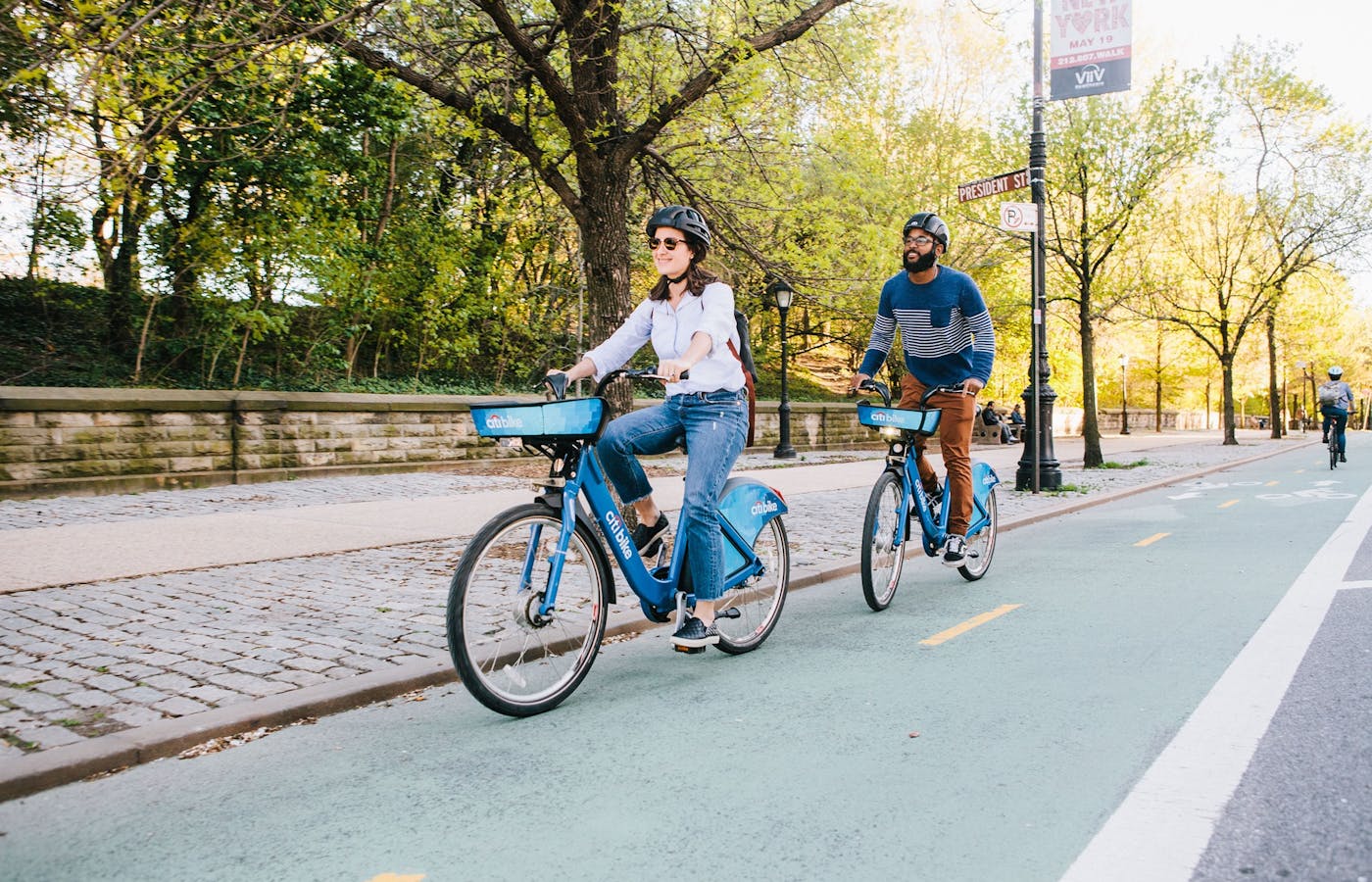
12. Shared micromobility is a good investment for cities
Bike and scooter share, known collectively as shared micromobility, is a good investment for cities. When shared micromobility is done equitably, it can help alleviate transportation insecurity and lead to better public health, environmental, and economic outcomes. Unfortunately, not nearly enough municipalities treat shared micromobility as an integral part of their transit landscape or fund it accordingly. That’s a huge miss.
A 2021 study found that bike share systems are a boon for public health, saving the U.S. healthcare system more than $36 million a year on average. Another research paper from that same year looked at New York’s Citi Bike and found that the system — the largest in the U.S. — is a net win for the climate. In Britain, a more recent study found that if one-fifth of car trips were taken by shared electric bikes or scooters, the result would be a more than $1.2 billion boost to the economy.
13. Bike laws are often inequitable
On paper, many bicycle laws — such as those that require people to wear helmets, use bike lights, obtain a bike license or register their bikes — seem like a great idea. After all, helmets can protect our heads in the case of a crash, lights help bikers see and be seen, bike licenses can raise money for infrastructure, and bike registrations safeguard people against theft. At least that’s all true in theory. In reality, these laws are virtually unknown and rarely enforced. When they do get enforced, it’s usually to the detriment of Black, Indigenous, or people of color (BIPOC) or those experiencing homelessness.
A report from Equitable Cities outlines how prevalent these transportation laws are in the U.S. In addition to the obvious trauma that can make even the most essential trip to the grocery store a fraught affair, these policies limit mobility, opportunity, and access for BIPOC. They also have implications beyond mobility, contributing to adverse social, political, economic, environmental, and health outcomes. There’s also evidence that repealing laws doesn’t have negative effects: A 2023 study also found that after a helmet law was abolished in Seattle, helmet use actually increased.
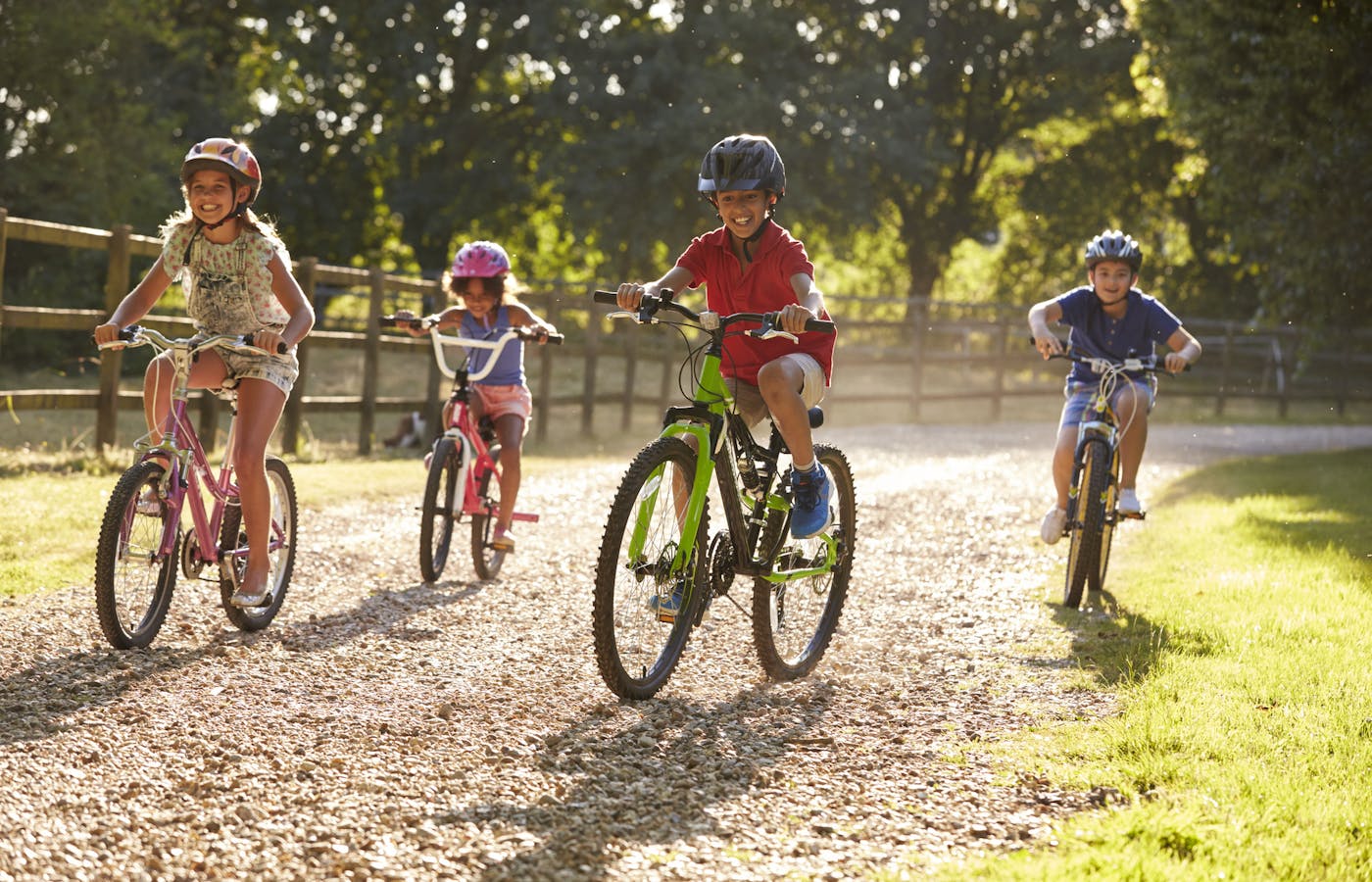
14. Bicycling is really good for our youth
There are obvious reasons why any bike advocate would want to see more kids on bikes, including the fact that youth are our cities’ future riders and the next generation of community leaders. What’s less often talked about are the holistic health benefits bicycling offers our children. Aside from the obvious physical benefits of increased activity, youths who engage in regular physical activity report fewer depression and anxiety symptoms, have higher self-esteem, and also perform better academically than kids who are inactive. Additionally, Outride’s “Riding for Friends, Fun, and Fitness” report highlights how youth who ride regularly report higher levels of mental well-being and spend fewer hours in front of screens.
15. How you message things is key
Don’t always focus on bikes — in fact, if you can manage it, your messaging should focus on the benefits to everyone rather than just people riding bikes. This may seem antithetical to the goal of getting more people riding but research bears out this messaging strategy. Make a point to talk about how bicycling infrastructure improves the lives of all, whether or not people choose to bike, by increasing opportunity, relieving congestion, and growing the economy through recreation improvements.
When discussing bicycle infrastructure, dwell less on the cyclists and instead focus on how infrastructure can help make streets safer for everyone, benefit people’s health, and provide crucial transportation access to jobs and essential services. Your messaging around bikes should always focus on bringing people together and turning drivers into supporters.
As the leaders in the fight for building better communities, the responsibility for messaging falls on us. To win over diverse groups and achieve a bike-forward agenda, we need to shift the conversation.
Related Topics:

